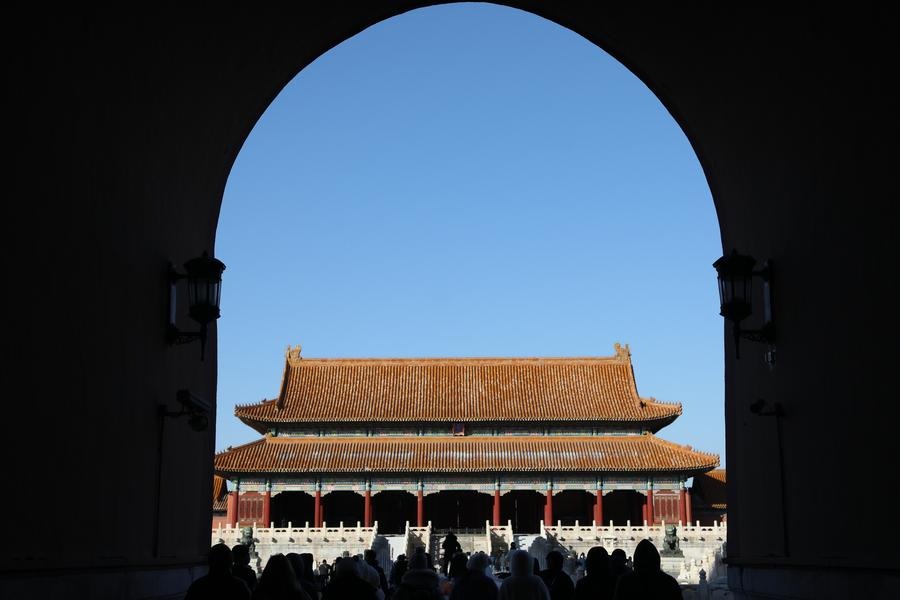One planet, all species living in harmony


Nature is the foundation of civilization and humanity's most powerful ally. From the air we breathe to the food we eat, our lives are inextricably linked with the natural world, and by extension, all other living things which, like us, depend on it for survival.
Natural habitats are not just home to countless species critical to maintaining the delicate balance of the planet's ecosystems, but also act as carbon sinks, protecting us against climate change. Forests alone absorb nearly 16 billion tonnes of carbon dioxide annually, while regulating global temperatures.
However, currently, around the world, from the deepest oceans to the tallest mountains, nature is under immense threat. Biodiversity is in serious decline, with species going extinct at a faster rate than any time in history.
Against this backdrop, the historic Kunming-Montreal Global Biodiversity Framework — agreed to at the 15th Conference of the Parties to the UN Convention on Biological Diversity in 2022 under China's presidency — paved a path to better safeguard the planet and promote coexistence with nature. It set 23 specific targets to be achieved by 2030, alongside four long-term objectives for 2050.
While some progress has been made toward achieving these goals, there is still much work to be done. Since 2020, for example, protected areas have increased by less than 0.5 percent globally. This leaves a land area roughly the size of Brazil and Australia combined, and at sea an area larger than the Indian Ocean, to be designated in order to meet the global target of protecting 30 percent of terrestrial, marine and freshwater spaces by 2030.
Sustainably protecting the world's increasingly fragile ecosystems will require significantly enhanced efforts and accelerated actions. To this end, China's continued pursuit of an "ecological civilization" has been an important commitment. Indeed, during the 14th Five-Year Plan (2021-25) period, China has made significant strides by improving its natural resource management, establishing conservation systems, and strengthening legislation for protected areas, which currently account for 18 percent of the country's landmass.
Moving ahead, it will be critical to accelerate momentum by building on this work and further expanding conservation efforts to increasingly larger areas to reach the Kunming-Montreal Global Biodiversity Framework's 30 percent target.
In doing this, we must recognize that biodiversity conservation goes hand in hand with climate action as two sides of the same coin. Healthy ecosystems provide some of our most effective nature-based solutions for both climate adaptation and reducing emissions. China's announcement that its new national climate action plan to be submitted later this year will include all sectors of the economy and all gases is therefore a critical step, and presents an opportunity to synthesize efforts by including biodiversity as a key priority.
Another way to do this is through financing. Currently, there is a $700 billion annual funding gap to protect and restore nature. A nature-positive economy could generate more than $10 trillion in annual business value and create 395 million jobs by 2030. Realizing this, however, will require a reorientation of financial systems away from siloed funding vehicles, and toward the UN Sustainable Development Goals — our global blueprint to ensure the future of both humans and the planet. By adopting integrated financing mechanisms and approaches that comprehensively tackle development challenges, increasing resources can be unlocked for broader impact.
Between 2022 and 2024, the UN Development Programme promoted more than $870 billion in investments toward the SDGs. In particular, our SDG Investor Maps and SDG Impact Standards have helped identify areas where investment opportunities align with sustainable development needs, and ensure that such investments are clearly linked to measurable social and environmental outcomes.
Similarly, the Kunming Biodiversity Fund announced by China in 2021, and launched last year, provides an international financing vehicle for developing countries to access additional funding needed to advance conservation efforts.
However, further accelerating financing at the speed and scale needed will require global, collective efforts. To that end, the 4th International Conference on Financing for Development in June will be a critical opportunity to unite countries around the world in reforming domestic and international financing and catalyzing greater investments toward sustainability. It will also be an opportunity for large creditor countries to consider debt repurposing to free up more resources for the protection of nature.
Finally, with the rapid emergence of revolutionary new technologies and cutting-edge digital tools, it will be critical to harness the transformative potential of these advancements and direct them toward development challenges, including biodiversity protection. Innovations like artificial intelligence offer ways to process vast amounts of environmental data, identify critical patterns and break down silos that have traditionally hindered conservation. UNDP has supported more than 50 countries in using AI to align national policies with global biodiversity goals. At UNDP, we look forward to continue building on our decades-long partnership with China in strengthening biodiversity protection to advance progress on the SDGs and promote harmony with nature.
We can still protect the planet through meaningful, decisive action, but it must happen now, and it must happen collectively. The stakes have never been higher, but together we can and must turn ambition into impact to create a more inclusive and sustainable future for all life on Earth — one in which nature and humanity will not only coexist, but also thrive.
The author is the UNDP resident representative in China.
The views don't necessarily reflect those of China Daily.
If you have a specific expertise, or would like to share your thought about our stories, then send us your writings at opinion@chinadaily.com.cn, and comment@chinadaily.com.cn.


































